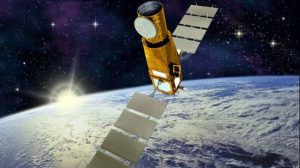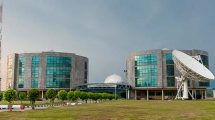 Analysts from Teal Group, an aerospace and defense consulting firm, have identified 3,164 space payloads proposed to be built and launched to Earth or deep space orbits between 2013 and 2032. They estimate the value of these potential satellites and other space payloads at more than USD 235 billion.
Analysts from Teal Group, an aerospace and defense consulting firm, have identified 3,164 space payloads proposed to be built and launched to Earth or deep space orbits between 2013 and 2032. They estimate the value of these potential satellites and other space payloads at more than USD 235 billion.
Near term, Teal analysts identify and quantify 276 proposed launches in 2013 (this figure is excluding the 150 launched through November 20, 2013), 481 in 2014, 481 in 2015, 329 in 2016, 173 in 2017, 102 in 2019, 111 in 2020, 98 in 2021 and 103 in 2022.
“Most spacecraft that have been announced are proposed to be built and launched within the next three to four years,” says Marco Caceres, Senior Space Analyst at Teal Group. “That’s why the numbers are so high over the next four years. We simply know more for the near-term than the out-years: 81 in 2023, 82 in 2024, 99 in 2025, 89 in 2026, 75 in 2027, 83 in 2028, 86 in 2029, 104 in 2030, 79 in 2031, and 85 in 2032.”
In their latest updating by type, Teal analysts noted that more than one third of spacecraft are commercial and nearly one third are civil. About one third are military, university and other.
“Most of the commercial spacecraft are for communications, imaging or navigation,” says Cáceres. “Civil and military are a wider mix — scientific, communications, imaging, navigation, early-warning, exploration, technology, crew transport and cargo resupply.”
Of proposed spacecraft by orbit, more than two thirds of the spacecraft are destined for low earth orbits (LEO), with 17% for geostationary orbits (GEO).
“Most of the LEOs are commercial mobile comsats and a variety of military, civil and university satellites,” says Cáceres. “Most of the GEOs are commercial comsats. MEOs are navigation, deep space are civil, and most elliptical are scientific.”
Of proposed spacecraft by customer region, three quarters of the spacecraft are proposed by government agencies, companies, universities and organisations in the United States, Russia and Europe.
“[It’s ]no surprise that the United States, Russia and Europe continue to dominate, given their large national space programmes and base of spacecraft manufacturers and commercial operators,” says Cáceres.
“But the fastest growing region is Asia and the Pacific Rim, notably China and India, fueled by ambitious national space programmes and huge demand for commercial satellite services,” Cáceres added.
“Keep in mind probably half (or more) of the spacecraft announced and identified in our Teal Group Worldwide Mission Model will never be built and launched, because of insufficient funding or technical challenges. And other spacecraft not yet proposed or even conceived will be built and launched. And that’s why we keep careful track of payload activity, altering our numbers with daily changes, as required.”












Add Comment